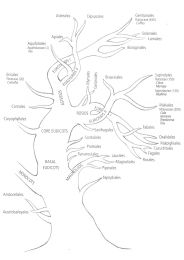Posted with permission from Zhang et al. (2012) Caffeine in Your Drink: Natural or Synthetic? Analytical Chemistry 84, 2805 to 2810. Copyright 2012 American Chemical Society. ᵃExcept for Coca Cola™
The figure shows, that ∂¹³C allows the discrimination between natural and synthetic caffeine. By coupling high-temperature reversed-phase liquid chromatography to isotope ratio mass spectrometry (HT-RPLC/IRMS), the caffeine concentration of the brew is simultaneously determined and thus allows the discrimination between coffee and tea caffeine, if correctly declared ☹ !
However, in order to assess the plant and/or geographic origin, multi element analysis is necessary. Already in 1982, Dunbar & Wilson compared the caffeine values for ∂¹³C, ∂²H, and ∂¹⁸O in tea and coffee of various provenances. They found that the D/H as well as the ¹⁸O/¹⁶O ratios of tea samples (3) were different from those of coffee samples (3) indicating either a difference in the water regime or in isotope discrimination between the two species.
Based on stable isotope ratios:
EA-C/P-IRMS
The isotopic composition of carbon (∂¹³C), nitrogen (∂¹⁵N), hydrogen (∂²H), oxygen (∂¹⁸O), and of other elements are characteristic for each plant species, see e.g.
but are further modified by environmental parameters such as cycles of matter, stresses, agricultural practices, geology, distance to the sea, a.s.o. Therefore, analysis of PuA or plant matrices may provide evidence not only of the caffeine's plant source but also of its geographic origin.
Origin assessment of plant or caffeine
Based on the PuA pattern:
HPLC-DAD
is still a rapid and sensitive technique to detect minor PuA in caffeine plant extracts. The system requires good separation of high caffeine concs from the rest. We give here an example of an early work done in our laboratory (Kappeler & Baumann 1985):
(a) standards: 1, theobromine; 2, paraxanthine; 3, theophylline; 4, theacrine; 5, caffeine; 6. liberine; 7, methylliberine; 8, internal standard (phenacetin).
(b) Arabica, (c) Arabusta,
(d) Robusta.
Robusta (d) is characterized by relatively high concs of theobromine and theophylline, and by well measurable concs of theacrine and liberine.
This approach was used to explore in detail several coffee provenances, and was extended to other caffeine plants (Weidner 1999, Maier & Weidner 2000).
For results see individual plant species among The Caffeine Plants


analytics
The 'Caffeines'
The
Caffeine Plants


